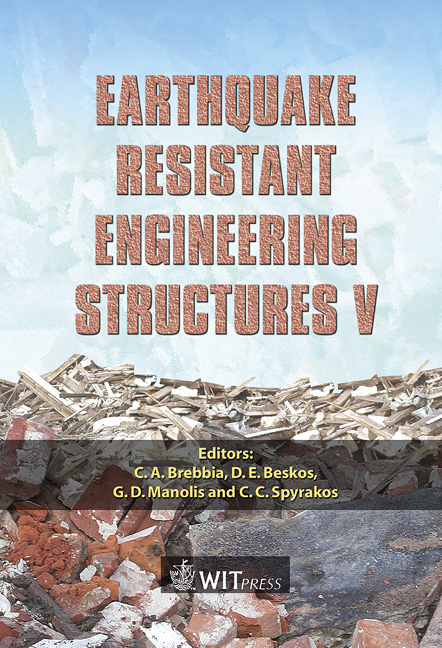Damage Controlled Seismic Design Of Quasi-brittle Beam Structures
Price
Free (open access)
Transaction
Volume
81
Pages
10
Published
2005
Size
348 kb
Paper DOI
10.2495/ERES050101
Copyright
WIT Press
Author(s)
G. D. Hatzigeorgiou & D. E. Beskos
Abstract
A new seismic design philosophy based on the concept of damage is presented and applied to the case of plane beam structures exhibiting quasi-brittle material behavior, such as that of plain concrete or masonry. The proposed direct damage controlled seismic design method quantifies and controls damage in a direct and transparent manner much better than any other of the existing methods. The method appropriately combines code based nonlinear stress-strain relations for the material with a simple expression for damage to determine with the aid of the fiber beam model and the finite element method axial force and bending moments as functions of damage. Using this method, the designer can either determine the damage level for a known section and loading, or dimension a section for a target damage level and known loading, or determine the maximum loading for a known section and a target damage level. The method is illustrated by means of two examples. The first one deals with the frequency analysis of a damaged concrete beam, while the second one with the damage control of a masonry arch subjected to vertical and lateral (seismic) load applied statically. Keywords: damage control, quasi-brittle materials, concrete, masonry, beam structures, seismic design, finite element method. 1 Introduction In order to satisfy safety requirements, three different seismic design philosophies have been developed to date leading to the following methods: the working stress method or allowable stress method (WSM), the ultimate strength method or force-based method (USM) and the displacement-based method (DBM). In spite of their advantages and wide-spread use, the above methods have various shortcomings. For example, the WSM is associated with elastic
Keywords
damage control, quasi-brittle materials, concrete, masonry, beam structures, seismic design, finite element method.





